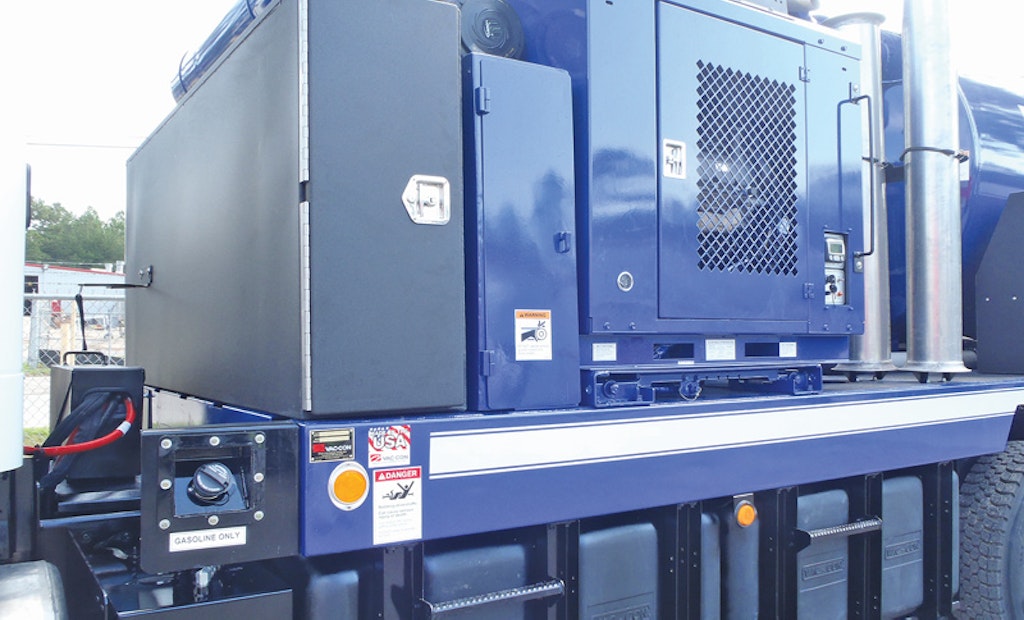Interested in Cleaning?
Get Cleaning articles, news and videos right in your inbox! Sign up now.
Cleaning + Get AlertsThe gasoline auxiliary engine option from Vac-Con is designed to be a less expensive, lighter weight and quieter alternative to a Tier 4 diesel engine in a two-engine combination machine. The 6.8 liter Ford V10 water pump engine provides 222 hp at 3,200 rpm and 360 ft-lbs. It delivers from 30 gpm to 120 gpm and up to 3,000 psi, yet weighs less than a comparable diesel engine.
Mike Selby, national service manager for Vac-Con, says the Ford engine was chosen for its emissions compliance with the California Air Resources Board, also known as ARB. “It’s really the only supplier at this point with the horsepower range that we required in an emissions-compliant engine for off-road application,” he says.
The greatest advantage of the engine over a Tier 4 diesel is cost, according to Selby. “Ever since discussion of the more stringent emissions tiers came through, we partnered with our suppliers and said, ‘What options do we have here?” he says. “We know that after-treatment is going to become extremely expensive as each tier is introduced, and we were starting to get a huge price differential between Tier 2 to Tier 3 to Tier 4.”
With gasoline engines already being used in the stationary pump and agricultural markets, Vac-Con decided to test it in a combination truck. “We actually had more horsepower with the gasoline engine,” he says, at a lower cost than that of a comparable diesel engine.
Other advantages of the gasoline option were lower fuel prices and less weight. “Just from the cast-iron block [in the diesel engine] to the aluminum block, it’s probably 200 pounds,” Selby says. “And that’s a conservative number.”
The engine also can be modified to run on less-expensive (approximately 40 percent less than gasoline) and cleaner-burning compressed natural gas (CNG). The modification process to accommodate the auxiliary CNG fuel cell adds approximately 36 inches to the length of the combination vehicle and negates the engine’s weight advantage over the diesel version.
Vac-Con’s two-engine combination unit with gasoline option is available on 5-, 9-, 11-, 12- and 16-yard models. “About 80 percent of the time, the customer is going to hydrojet, jet or use the hose reel and spool to clean sewer lines, especially in a maintenance practice,” Selby says. “You’re not going to vacuum every single manhole.”
The two-engine system allows the chassis engine to be turned off during jetting operations for added savings. Mounted behind the cab, away from the operator, the auxiliary engine also produces less noise and creates less heat than a system powered entirely by the chassis engine, he says. “Especially if you’re in warmer climates.” 888/491-5762; www.vac-con.com.








